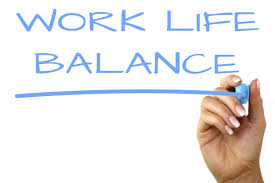TRAINING PROGRAMS
The best training programs are designed around the actual needs of employees, thereby allowing employees to concentrate on and achieve their specific goals.
Lean on us to help you enhance your existing wellness program through objective evaluation, strategic planning to enhance the culture of wellness, and implementation of our Aspire2 Wellness System.
Cornerstone Programs
These programs are designed to target specific positive behavior changes with practical achievable actions. Our executive coaches will assist you in identifying and improving areas that will not only become a part of the overall organizational culture, but incorporate other components that improve work-life balance, promote resilience, and enrich the workplace.
Leadership and Engagement
Culture and Communication Skills
Wellness Coaching
Nutritional and Physical Initiatives
Roadmap To Resilience (see below)
Stress Management (see below)
Engaging A Multi-Generational Workforce (see below)
Roadmap To Resilience
Research from the past 20 years has shown a steady increase in the occupational stressors associated with a rise in employee turnover, underperformance, and diminished engagement. When work stress becomes chronic and overwhelming, it can be detrimental to both an individual’s physical and mental health and the global burden of burnout cost is now in excess of $300 billion annually.
Resilience is often seen as the process of having the strength to cope, to be able to bounce back from adversity, or being determined to see things through to the end. If employees do not have resilience skills, their productivity and health levels decline while their stress levels rise.
In this 2-hour presentation, we will outline five tools that human resource management can implement to reinforce resiliency and promote a positive environment in the workplace.
This is also available as a 4-week series focusing on practical examples to build and expand your resilience using each of the five tools.
How To Reduce Stress And Positively Impact Wellbeing
How does stress form, and why is it a challenge to recognize early and do something to stop it? A 2018 study by the National Institute of Health suggests that even small daily stress factors can lead to health problems later in life. Long working hours, higher workloads, shorter deadlines, and increased expectations contribute to the rise in workplace anxiety and pressure. Yet everyone responds differently to stress depending on personality, cultural background, social circumstances, and past experiences.
In this 60-minute presentation, we will outline:
1. How we react to different stressors and how to identify triggers
2. How to break out of unhealthy behaviors
3. How to identify the difference between stress and burnout
4. What key principles of stress management you can apply now
5. Three stress-management tools to use to recognize and minimize stress
We will provide evidence-based tips that you can implement both at work and home to promote positive behavior change, reduce stress, and eliminate burnout.
This is also available as a 4-week experiential series focusing on practical examples to enhance self-care and expand your awareness of your personal stress levels using three stress-management tools.
Engaging A Multi-Generational Workforce
Today’s workplace has been described as a generational melting pot and is undergoing a major transition that presents both considerable challenges and significant opportunities.
When leaders can better manage employees of all ages, it’s a win-win for everyone.
In this 45-minute presentation, we will map out how an age-diverse workforce can work in your favor and how organizations that embrace generational differences in values, communication, and collaboration create opportunities for new energy and motivation, enhanced productivity and engagement, and potential business success.
Our certified wellness professionals can help you develop lifestyle, physical, and nutrition programs including:
Meditation (see below)
Yoga
Movement campaigns, nutrition
Ergonomics, fatigue and sleep,
Resiliency education, weight loss, diabetes
Financial wellness and round tables
One-Minute Meditation
In this four-week experiential program we teach the research behind the one-minute meditation. Attendees learn different methods of meditation in each 45-minute session. The benefits include:
· Stress reduction
· Increased compassion
· Higher job satisfaction
· Improved performance
· Improved interpersonal relations
· Increased conflict management
· Improved leadership performance
Workspace Environment
In addition to well-being programs, we will also help you to explore the workspace environment and any job-sharing or shift-work aspects that are conducive to the individual’s and group’s morale, growth, and well-being.
The company’s topmost strength is the employees and in order to be more flexible and proactive, the organization’s approach to wellness must focus on more than the individual’s physical or mental health and basic interventions such as smoking cessation, weight control, and stress management.
Flexibility
The structure of successful programs is open and inclusive, affordable, fits in with work schedules, and includes tools to create new habits at home and in social environments too. This ensures that the reach of the programs is specifically tailored to be all-encompassing, understands the different stages of change in order to address participation, and assesses risks and potential barriers to sustaining engagement.
“In conclusion, organizations are beginning to make meaningful advancements towards “growing” loyal employees. In today’s workplace, leaders must learn to strategically adapt their communication styles towards these ends in order to achieve and sustain competitive advantage.”




